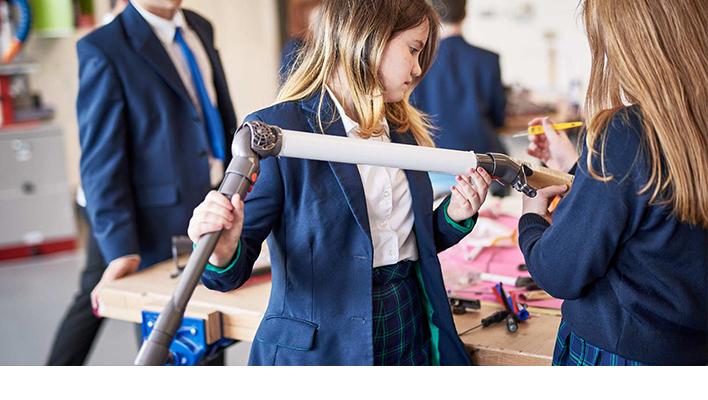Dyson On: Addressing the skills shortage
The James Dyson Foundation (JDF) has been working with schools in Bath in an effort to transform the way that Design and Technology (D&T) is taught and to address the subject’s decline.
17 June 2019
What’s the problem?
The UK has a crippling annual shortage of 59,000 engineering graduates and technicians. This shortage comes at a time when the UK is facing a greater breadth of challenges year on year, such as the need to develop clean transport solutions, manage the risk of cyber-attacks and meet the needs of the ageing population.
Although the engineering sector is growing and diversifying, the growth isn’t reflected in the education system, with 40% of employers reporting a shortage in science, technology, engineering and mathematics (STEM) graduates. Investment needs to be directed more substantially into the education sector to support the next generation of engineers, and this starts in schools.
Children entering primary schools today face a future in which 85% of the jobs they will go on to pursue don’t yet exist. Many of these jobs will be in the engineering and technology sector, so there couldn’t be a more pressing time to equip students with an innovative and creative way of thinking and ensure they have strong academic foundations.
What’s the solution?
From 2012-2018, the JDF embarked on a project to tackle this issue. A curriculum based on iterative design, project-based and problem-led learning was rolled out in five schools based in Bath. The project aimed to inspire young people to become designers and engineers by bringing real-life design engineering into the classroom, through problem-focused, open-ended projects supported by access to high-tech equipment.
The JDF donated £75,000 to each school, and all schools matched this amount with £25,000 of funding to great state-of-the-art D&T labs. Dyson engineers also shared their knowledge to help create worksheets for the students, giving guidance on developing and presenting ideas, and running prototyping and problem-solving workshops. This allowed the students to engage with engineers and ask them any questions they had about what it’s like to be an engineer.
The result
Over the course of the project, there was an increased uptake of students choosing to study D&T at GCSE and A Level, as well as an improved perception of engineering, and its relationship to gender. Teachers also found greater enjoyment in teaching the subject and noted an improved teaching method that applied to the curriculum.
What’s next?
The JDF hopes that the evidence from the five schools will support change on a national scale. The successes and learnings of the project are accessible to D&T departments across the country in a report and schemes of work that are free to download from jamesdysondoundation.co.uk. As more schools adopt this new approach to D&T, and if the government moves to support the subject in schools, D&T could be transformed on a national scale.
For more information, please visit jamesdysonfoundation.com
To download the video, please click here.
Press contacts
-
Liv Thomas
-




